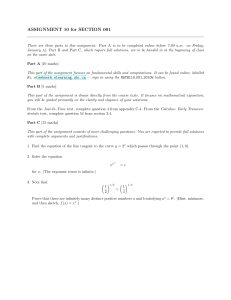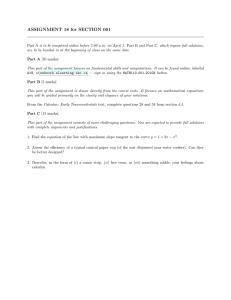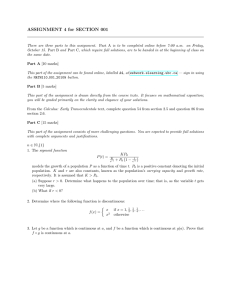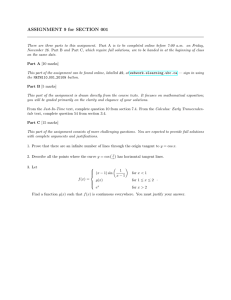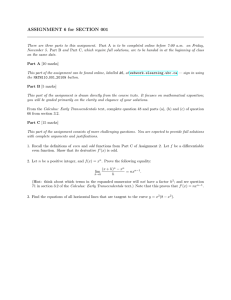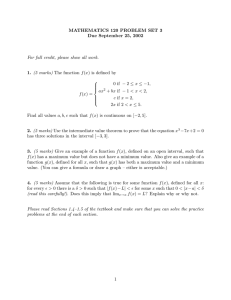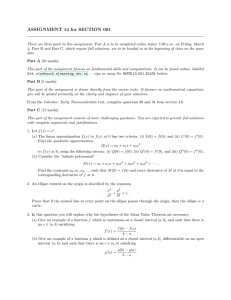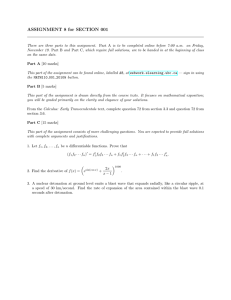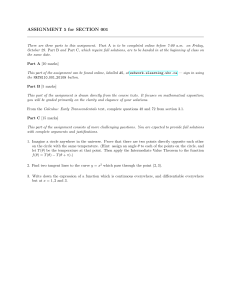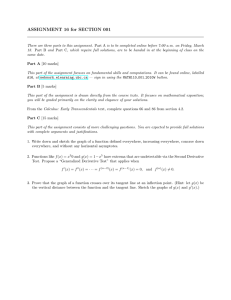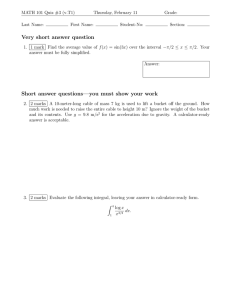ASSIGNMENT 15 for SECTION 001
advertisement
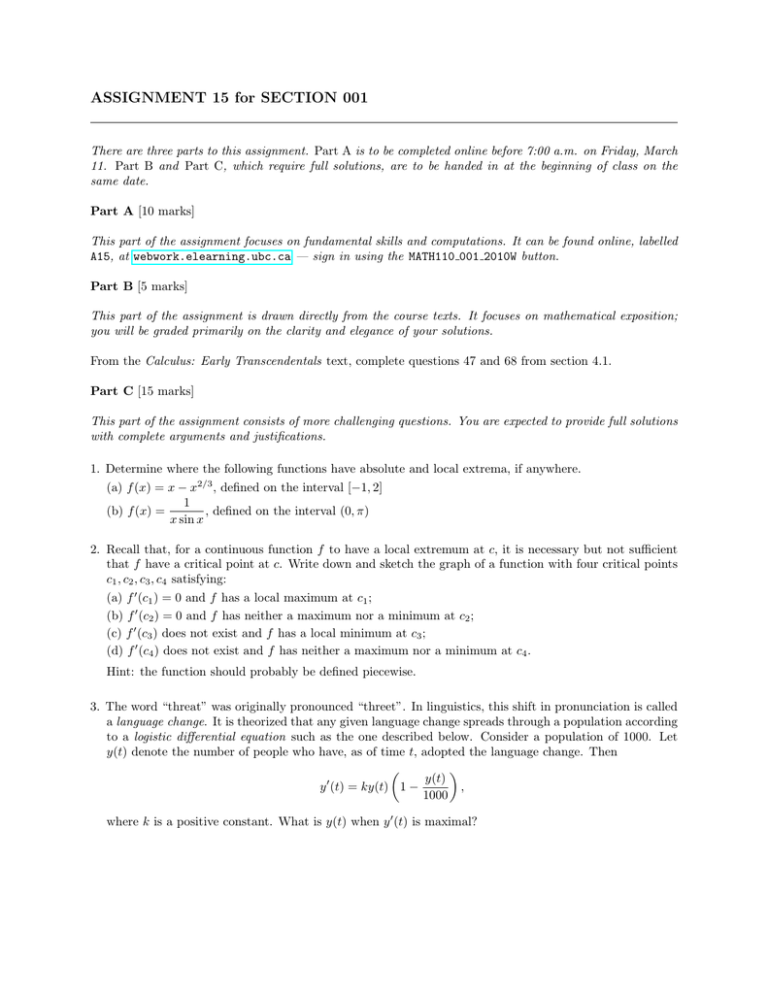
ASSIGNMENT 15 for SECTION 001 There are three parts to this assignment. Part A is to be completed online before 7:00 a.m. on Friday, March 11. Part B and Part C, which require full solutions, are to be handed in at the beginning of class on the same date. Part A [10 marks] This part of the assignment focuses on fundamental skills and computations. It can be found online, labelled A15, at webwork.elearning.ubc.ca — sign in using the MATH110 001 2010W button. Part B [5 marks] This part of the assignment is drawn directly from the course texts. It focuses on mathematical exposition; you will be graded primarily on the clarity and elegance of your solutions. From the Calculus: Early Transcendentals text, complete questions 47 and 68 from section 4.1. Part C [15 marks] This part of the assignment consists of more challenging questions. You are expected to provide full solutions with complete arguments and justifications. 1. Determine where the following functions have absolute and local extrema, if anywhere. (a) f (x) = x − x2/3 , defined on the interval [−1, 2] 1 (b) f (x) = , defined on the interval (0, π) x sin x 2. Recall that, for a continuous function f to have a local extremum at c, it is necessary but not sufficient that f have a critical point at c. Write down and sketch the graph of a function with four critical points c1 , c2 , c3 , c4 satisfying: (a) f 0 (c1 ) = 0 and f has a local maximum at c1 ; (b) f 0 (c2 ) = 0 and f has neither a maximum nor a minimum at c2 ; (c) f 0 (c3 ) does not exist and f has a local minimum at c3 ; (d) f 0 (c4 ) does not exist and f has neither a maximum nor a minimum at c4 . Hint: the function should probably be defined piecewise. 3. The word “threat” was originally pronounced “threet”. In linguistics, this shift in pronunciation is called a language change. It is theorized that any given language change spreads through a population according to a logistic differential equation such as the one described below. Consider a population of 1000. Let y(t) denote the number of people who have, as of time t, adopted the language change. Then y(t) , y 0 (t) = ky(t) 1 − 1000 where k is a positive constant. What is y(t) when y 0 (t) is maximal?
